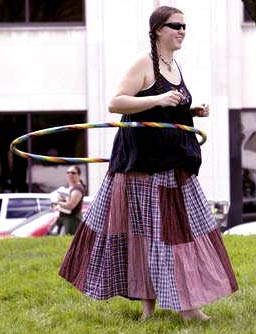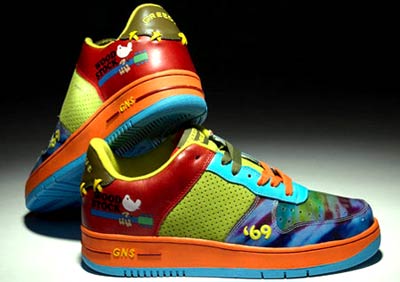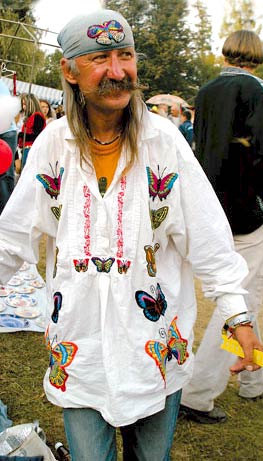| Ireland in the
Fixties ~
Fashion |
| . |
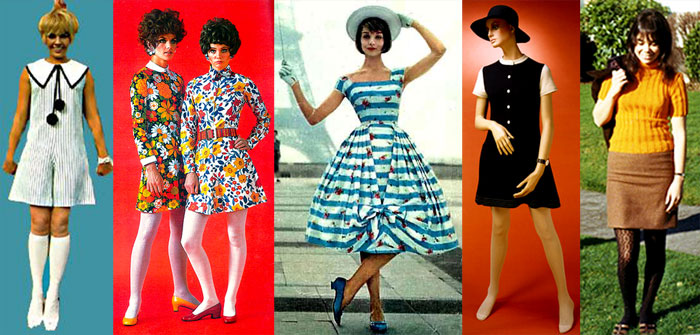 |
| . |
|
Bright colours, hoops, polka-dots and
imaginative design were the hallmarks of ladies' fashion in the
late-'50s and early '60s. There wasn't much disposable income
and of course budget chain-stores had not arrived in Ireland but
yet, girls took a great pride in their appearance and dressed
very well, especially when going to a dance.
The trend of making clothes
at home in the 40’s, carried on into the 1950’s. Material became
more available and the style was very much domineered by the
Hollywood stars. Actresses and singers that made an impact on
women and their fashion included: Audrey Hepburn, Grace Kelly,
Doris Day and Alma Cogan.
Two styles were more
prominent than others – the chic look and the girl-next door
style. The chic look consisted of a pencil skirt, worn just
below the knee and very tight. This would be worn with a blouse
with a stick up collar and a wide belt to accentuate the waist.
Matching accessories (gloves, shoes and handbag) were a must for
any fashion conscious female. Their hair was soft and curly and
it wasn’t out of the ordinary to go to bed with curlers in their
hair. In contrast, the second style was a more casual affair.
Skirts and dresses had layers of material -silks, satins and
cotton, with a stiff net petticoat underneath. Narrow legged
trousers, tapered to the ankle were very popular also. Scarves
were worn around the neck and ankle socks were very popular.
Their hair would often be tied up in a ponytail. |
|
|
. |
 |
| . |
|
Many girls made their own dresses and frocks.
Patterns could be bought in their local drapery shop and
needlework was taught in all schools. If the right material
could be sourced locally, outfits such as those illustrated here
might be put together in one evening.
The
pencil skirt remained into the early '60s. Pleats were
introduced in skirts and these were worn with either short
sleeved blouses or jumpers. But the fashion was soon to have a
new style. Using models: Twiggy and Jean ‘The Shrimp’ Shrimpton
and others, Mary Quant introduced women to a whole new world of
fashion. Although it was argued at the time as to the rightful
inventor, the mini-skirt will always be associated to her.
Geometric patterns and psychedelic colours took over from the
plain colours of the 50’s. With blocks, stripes, dots of every
size – the bigger and bolder, the better! Hair became much
shorter with quite a blunt cut and a fringe. Peaked caps were
popular too. Stockings made way for tights (or pantyhose) and
vinyl knee boots completed the ‘Quant’ look.
In contrast to this,
many women preferred the more ‘lady-like’ style. This was quite
similar to the '50s but patterns varied from candy-stripes,
gingham, polka dots and plain colours. Dresses and suits were
worn with matching handbag, shoes, gloves and hat (as made
famous by Jackie Kennedy).
However, there was
another style that was to dominate the mid to late 60’s. This
was influenced by the ‘Flower-power’ era. Women became more
adventurous with their clothes. Dungarees, jeans (made from
denim) were worn with tie-dyed t-shirts. Blouses tied up at the
waist were popular with ‘hipster’ jeans and skirts got longer.
Styles such as ‘the gypsy’ (off the shoulder tops and skirts
worn with a broderie anglaise petticoat) and sandals, completed
the look. Hair was worn long and loose or plaited. Towards the
late '60s, Mary Quant introduced a new fashion that was to take
the industry by storm – the hot pants. |
|
|
. |
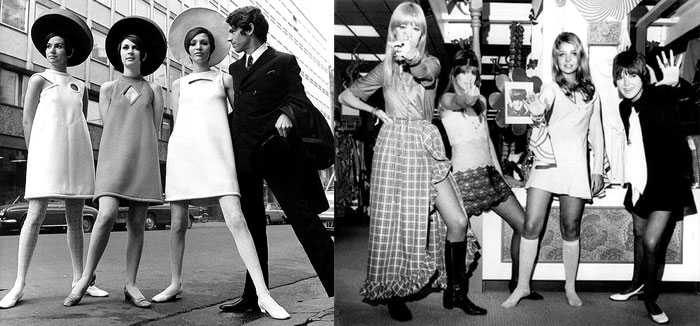 |
| . |
|
Simply-cut mini-dresses were popular, sometimes
worn with knee-high boots. Plain pastel pinks, blues and yellows
or gingham were often used to create attractive outfits. |
|
| . |
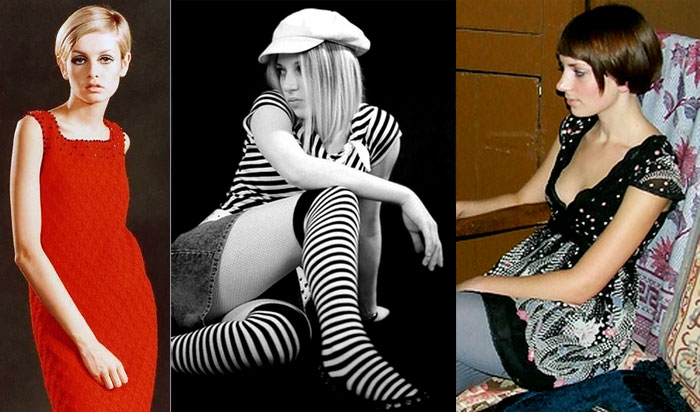 |
| . |
|
Girls became more adventurous in the latter half
of the '60s decade. Twiggy, Jean Shrimpton and Mary Quant
introduced cheesecloth, patterned tights and clingy Lycra and Irish girls followed
the trends. Floppy caps and Indian smocks began to be seen on
Irish streets. Even today, those fashions would stand out as
being creative and individual. |
|
| . |
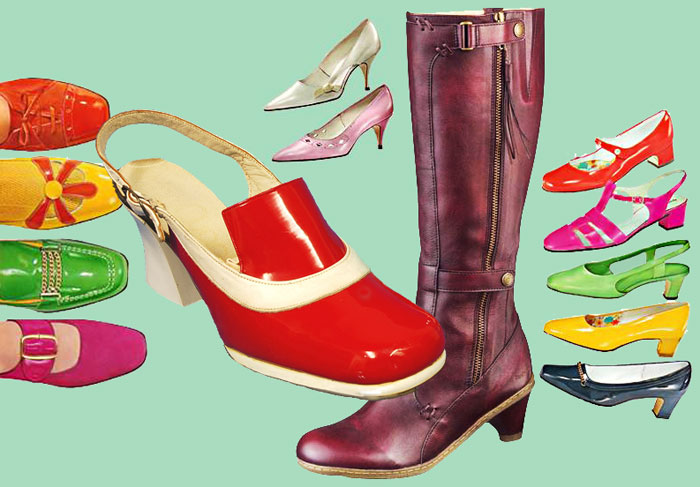 |
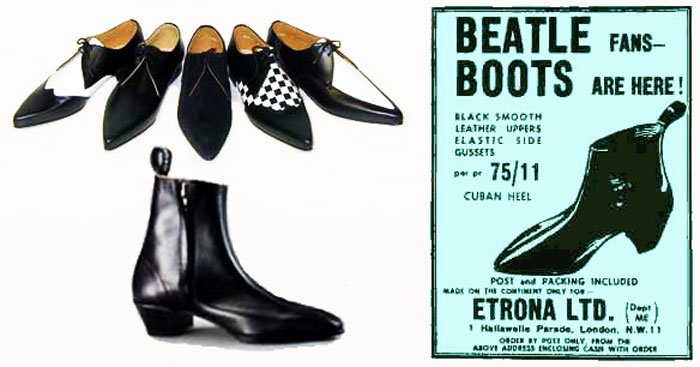 |
| . |
|
Women's shoes were colourful and matched with
dresses and bags. Boots were often worn with short skirts. In
the late '50s, pointed shoes known as winklepickers were worn by
young men and Beatle boots appeared in the early '60s. |
|
| . |
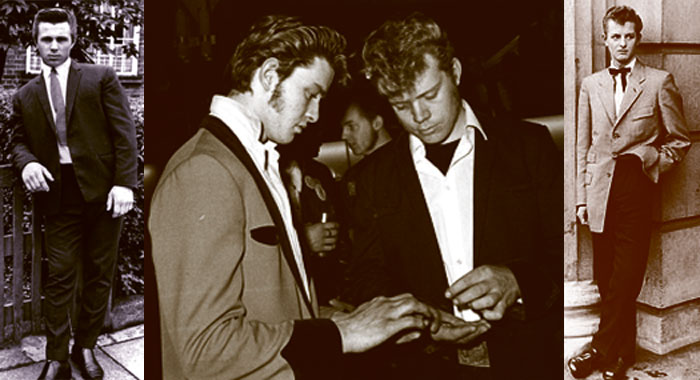 |
| . |
|
And let's not forget the teddy-boys! They had a
very distinctive look - long, brightly coloured jackets with
black velvet collars, drainpipe trousers and crepe-soled shoes.
Hair slicked back with Brylcreem topped off the look. In groups,
they might look intimidating but all they wanted to do was
listen to Elvis on the jukebox and jive to the sounds of rock
'n' roll. |
|
| . |
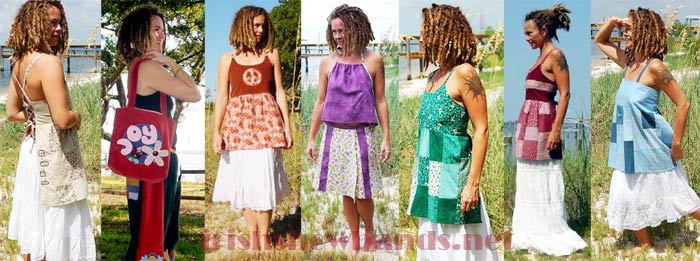 |
| . |
|
Around 1967, there was a dramatic change in
popular fashions. It was the Summer of Love, Woodstock, San
Francisco, peace and love. Tie & Dye, cheesecloth and floral
prints became very popular, with both sexes. The hula-hoop
(left) was a popular '60s fad. |
|
| . |
|
|
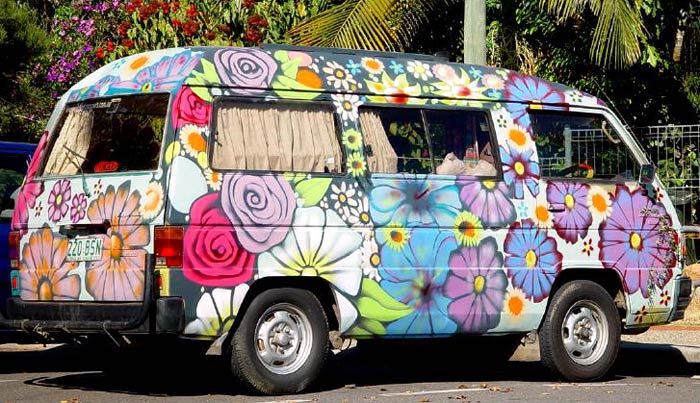 |









